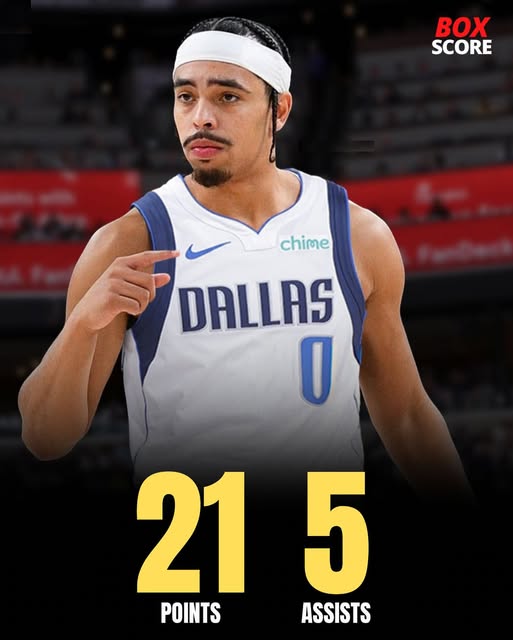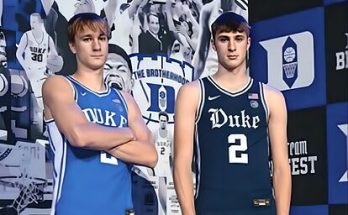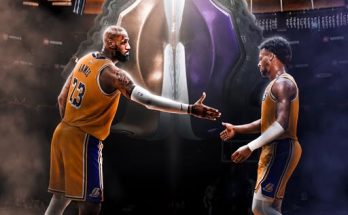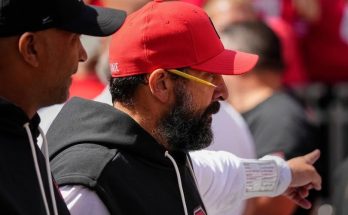The NBA is a league of constant evolution. Each offseason brings a flurry of trades, free agent moves, and draft selections that shape the future of teams. But not every trade pans out the way it’s expected to. Often, fans and analysts look back at deals made and realize one side clearly came out on top. That is quickly becoming the case with the recent trade involving Andrew Nembhard and the Indiana Pacers, with the Dallas Mavericks looking like the early, definitive winners. Now, as the NBA Summer League shines a light on the league’s youngest and hungriest talents, it’s become even more apparent: the Pacers may have fumbled this one, and Dallas struck gold.
To understand the implications of this trade, we need to look at what Andrew Nembhard brings to the table, how he’s performed thus far, and what his potential trajectory in the league looks like. We also need to examine the motivations behind the trade, what Indiana was trying to accomplish, and why it might already be backfiring. Finally, we’ll evaluate how Dallas positioned themselves to capitalize on Indiana’s mistake and how Nembhard’s play in the Summer League has only added fuel to the fire that Dallas decisively won this exchange.
Andrew Nembhard’s journey to the NBA was not the flashiest. A solid, dependable guard out of Gonzaga, Nembhard made a name for himself through high basketball IQ, disciplined playmaking, and the ability to control tempo. He wasn’t a high-volume scorer or an explosive athlete, but he had the poise of a ten-year veteran from the moment he stepped on the court. That kind of maturity is rare among rookies, and Indiana seemed to hit the jackpot when they picked him up.
His rookie year with the Pacers was filled with promising moments. Despite not being the focal point of the offense, Nembhard showcased strong decision-making and the ability to guard multiple positions. His assist-to-turnover ratio was among the best for rookies, and he gave the Pacers valuable minutes as both a starter and a reserve. He carved out a role not just as a backup guard, but as a trusted facilitator in crunch time. And in games where Tyrese Haliburton sat out, Nembhard stepped up admirably. By all metrics, he looked like a long-term piece in Indiana’s rebuild.
But the NBA is also a business. Indiana, flush with young guards and eager to make a playoff push, decided to shake things up. Rumors circulated about their desire to acquire veteran help or a more explosive scorer. And then came the trade: Andrew Nembhard shipped to the Dallas Mavericks in a multi-team deal that had basketball insiders scratching their heads.
What did Indiana get in return? Not much, frankly. They cleared some salary, added a few bench pieces, and picked up a second-round pick. No game-changer. No potential All-Star. Just depth and flexibility. It felt like the Pacers were selling low on a high-upside guard, and fans were rightfully puzzled. It wasn’t that the trade was necessarily disastrous on the surface; it just felt… unbalanced. When you give up a 24-year-old guard with clear two-way upside, you’d expect something substantial in return. Indiana didn’t get that.
On the other side of the deal stood Dallas, a franchise that has been desperately searching for backcourt depth behind Luka Dončić and Kyrie Irving. The Mavericks had tried various combinations—veteran journeymen, unproven rookies, and G-League standouts—but nothing had clicked. They needed a guard who could play smart, defend his position, and not demand the ball. Nembhard fit that description perfectly.
From the moment he touched down in Dallas, there was an undeniable buzz around Nembhard. And then came the Summer League, a proving ground for young players to make their mark. Nembhard didn’t just show up; he dominated. He ran the offense like a seasoned floor general, setting up teammates, dictating pace, and hitting timely shots. But more than the stats, it was the way he controlled the game that stood out. In a league that increasingly values chaos and athleticism, Nembhard brought calm and precision.
His vision in the pick-and-roll was elite. His ability to defend both guard spots and switch onto wings gave Dallas versatility. He looked like a starting-caliber player on a team that’s already loaded with offensive firepower. And most impressively, he didn’t try to do too much. He played within himself, elevated those around him, and consistently made the right read. In a league where young players often struggle with decision-making, Nembhard was a breath of fresh air.
The Mavericks coaching staff has been glowing in their praise. They see Nembhard as a legitimate contributor—not a project or a development piece. There are already murmurs that he could start in certain lineups or at least see significant minutes alongside Dončić and Irving. His presence allows Dallas to stagger their stars more effectively, preserve energy during long stretches, and still maintain offensive rhythm.
Meanwhile, Indiana’s rationale for the trade becomes increasingly difficult to justify. Their backcourt remains talented, no doubt. Haliburton is an All-Star, Bennedict Mathurin has upside, and T.J. McConnell is a proven veteran. But Nembhard offered something unique: a blend of maturity, composure, and adaptability. That combination is rare, and giving it away for marginal assets seems shortsighted. It’s not just about who starts; it’s about depth, matchups, and injury insurance. In a long 82-game season, teams need players like Nembhard. Indiana, once flush with guard talent, now looks thinner than expected.
This isn’t to say the Pacers are doomed. They still have a promising core, a top-notch coach, and the potential to make a playoff push. But this trade will likely haunt them for years. Fans already miss Nembhard’s presence, and if he blossoms in Dallas—as many expect—it will be a painful “what could have been” moment for Indiana’s front office.
Trades are judged not just by immediate returns, but by how the players involved develop. Nembhard is only scratching the surface. He’s the kind of player every winning team needs—low-maintenance, intelligent, and clutch under pressure. And if his Summer League performance is any indication, Dallas may have stolen a future playoff contributor for pennies on the dollar.
It’s also worth noting that Nembhard’s rise comes at a time when backcourt depth is more important than ever. With injuries and load management playing a bigger role in today’s game, teams that can roll out three or four capable guards have a competitive advantage. The Mavericks now have that. And because Nembhard doesn’t demand high usage, he fits seamlessly next to two ball-dominant stars. He can spot up, attack off the bounce, or serve as the primary initiator when needed. That kind of versatility is invaluable.
From a developmental perspective, Dallas is the ideal landing spot. Under head coach Jason Kidd, himself a Hall of Fame point guard, Nembhard will have mentorship and structure. He’s surrounded by elite talent, which means he doesn’t have to carry the load, but he’ll also be held to a high standard. That kind of environment is perfect for a second-year player trying to solidify his role in the league.
What’s more, Dallas fans have quickly embraced him. In a city that knows good basketball when they see it, Nembhard is already earning praise for his grit and intelligence. He doesn’t chase highlight plays or flashy stats—he just wins possessions. That’s the kind of player you want in a playoff series. Someone who can come in, steady the ship, and make sure the team gets a quality shot every time down the floor.
Contrast that with Indiana, who may find themselves second-guessing the move as the season progresses. If Haliburton misses time, or if McConnell’s age starts to show, the lack of depth will hurt. And when Nembhard is helping Dallas win crucial games, it’ll be a tough pill to swallow.
This trade is also a valuable case study in asset management. In the modern NBA, teams must be ruthless in evaluating not just talent, but fit and value. Letting go of a quality young player with upside for little return is the kind of mistake that sets franchises back. Dallas didn’t just get a player—they got a system-fitting piece who improves their rotation immediately. That’s how winning franchises operate.
As the Summer League winds down, the narratives begin to solidify. Nembhard has been one of the standouts, not just for his play but for his impact. Coaches, scouts, and executives are taking notice. And while Summer League success doesn’t always translate, in Nembhard’s case, it’s confirmation of what many already believed: this kid is for real.
The Pacers had something special and gave it away too soon. Maybe they didn’t see the ceiling. Maybe they were too focused on other needs. Maybe they simply misjudged the value. Whatever the reason, the result is clear: Dallas won big. They got a playoff-ready guard for a bargain price, and in doing so, they fortified their roster in a meaningful way.
Nembhard’s story is still being written, but the early chapters in Dallas are filled with promise. He’s not the loudest player, nor the flashiest. But he’s effective. Smart. Consistent. And in the NBA, that’s worth more than gold. The Mavericks saw what others didn’t, took a calculated risk, and are now reaping the rewards.
Meanwhile, Indiana watches from the sidelines, wondering if they made the right call. Time will tell. But for now, the scorecard is clear. The Pacers lost this trade. And Dallas? They just got a whole lot better.



